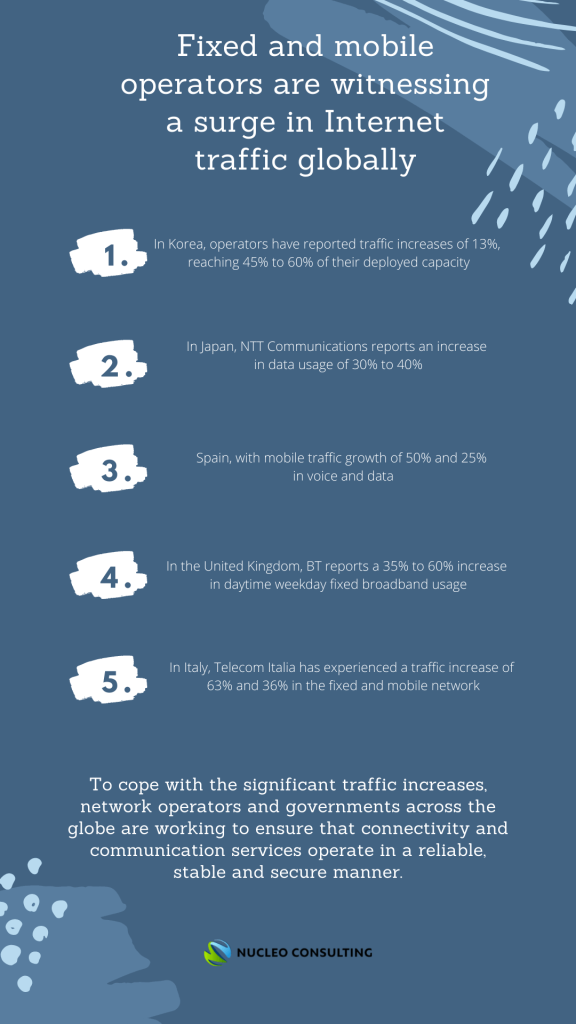Internet & New Rules For A New Reality
We are all now connected by the Internet, like neurons in a giant brain.
The COVID-19 pandemic has graphically illustrated the importance of digital networks and service platforms. Digital networks that deliver the internet to our homes, and the services that ride on those networks have leapt from an ancillary “nice to have” to something that is critical to economic activity and our daily lives.
Keeping the Internet up and running in times of crisis
- Since the start of the COVID-19 crisis, demand for broadband communication services has soared, with some operators experiencing as much as a 60% increase in Internet traffic compared to before the crisis.
- Network operators and content providers have to date successfully maintained services and efficiently utilised pre-existing capacity, and in certain cases expanded this capacity.
- Additional short term measures are important to further enhance network stability and resilience, and to reduce the digital divide: for example, ensuring access for network operators and content providers to communication equipment, datacentres, and mobility of technicians to customers’ homes.
- Policy makers and regulators can alleviate congestion in mobile networks by releasing additional spectrum on a temporary basis, or by approving temporary commercial spectrum transactions between providers that put unused spectrum into service.
- In the medium term, regulators could stimulate broadband providers to deploy more fibre deeper into the networks and gradually phase out xDSL technologies, where possible, and alleviate administrative burdens to ease network deployment

Fixed and mobile broadband operators, as well as content providers, have successfully managed their networks to accommodate changes in utilisation patterns, respond to overall increased demand and avoid congestion that impacts working and studying from home, while supporting critical services such as telemedicine and emergency response.
